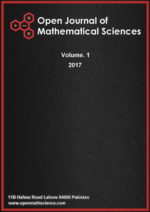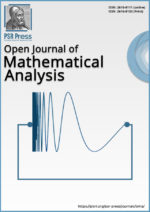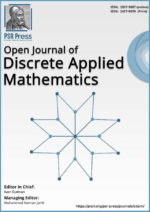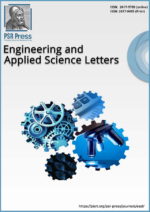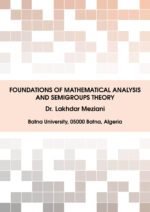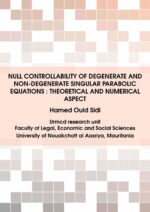Ptolemy Scientific Research Press (PSR Press)is a highly regarded publisher of scientific literature dedicated to bringing the latest research and findings to a broader audience. With a focus on cutting-edge research and technology, Ptolemy Scientific Research Press offers a range of publications catering to professionals, researchers, and student’s needs. Whether looking for information on the latest breakthroughs in physics, biology, engineering, or computer science, you can trust Ptolemy Scientific Research Press to deliver insightful, accurate, and engaging content. With its commitment to quality, accessibility, and innovation, Ptolemy Scientific Research Press is an essential resource for anyone interested in science and technology.

Latest Published Articles
OMS-Vol. 5 (2021), Issue 1, pp. 94 – 100 Open Access Full-Text PDF
U. K. Qureshi, A. A. Shaikhi, F. K. Shaikh, S. K. Hazarewal, T. A. Laghari
Abstract: Finding root of a nonlinear equation is one of the most important problems in the real world, which arises in the applied sciences and engineering. The researchers developed many numerical methods for estimating roots of nonlinear equations. The this paper, we proposed a new Simpson type method with the help of Simpson 1/3rd rule. It has been proved that the convergence order of the proposed method is two. Some numerical examples are solved to validate the proposed method by using C++/MATLAB and EXCEL. The performance of proposed method is better than the existing ones.
EASL-Vol. 4 (2021), Issue 1, pp. 62 – 68 Open Access Full-Text PDF
Huan You
Abstract: The purpose of this study is to explore the influence of factors on patients with chronic kidney disease (CKD) and to establish predictive models using machine learning methods. Data were collected from the Affiliated Hospital of Nanjing University of Chinese Medicine between January 2016 and December 2017, including 69 CKD patients and 155 healthy subjects. This study found that carotid intima-media thickness (cIMT) is the most important indicator among the top 9 important features of each model. In order to find the best model to diagnosis CKD, extreme gradient boosting (XGBoost), support vector machine (SVM) and logistic regression are established and XGBoost is the most suitable model for this study (accuracy, 0.93; specificity, 0.89; sensitivity, 0.94; F1 score, 0.91; AUC, 0.99).
EASL-Vol. 4 (2021), Issue 1, pp. 50 – 61 Open Access Full-Text PDF
S. O. Ehikhuenmen, E. E. Ikponmwosa, F. A. Falade
Abstract: Out of the top ten current global issues, climate change and pollution top the list. These issues have brought about adverse effects on our climate, health and communities. This study aims to investigate the structural performance of sawdust ash blended steel slag aggregate concrete and modelling their structural properties using a multivariate interpolation method. In order to achieve this, the physical properties, physio-chemical, chemical composition, mechanical properties tests were conducted. The result revealed that sawdust ash is classified as a class C type pozzolan having a total of 61.59% combined percentage masses of silica, alumina and ferric oxides, while steel slag aggregate is classified as poorly graded. The composite concrete recorded higher density, compressive and split tensile strengths when compared with normal concrete cured in potable water. The results revealed that normal concrete with normal aggregate is more durable than sawdust ash blended steel slag aggregate (composite) concrete when cured in an aggressive environment. The developed models were found to agree strongly with the experimental data, with an outstanding correlation level. This research has led to the creation of high strength pozzolan blended steel slag aggregate concrete, thus improving waste management, reduction in environmental pollution and \(CO_2\) gas emission.
OMA-Vol. 5 (2021), Issue 1, pp. 51 – 63 Open Access Full-Text PDF
Mawia Osman, Zengtai Gong, Altyeb Mohammed Mustafa
Abstract: In this paper, the reduced differential transform method (RDTM) is applied to solve fuzzy nonlinear partial differential equations (PDEs). The solutions are considered as infinite series expansions which converge rapidly to the solutions. Some examples are solved to illustrate the proposed method.
EASL-Vol. 4 (2021), Issue 1, pp. 42 – 49 Open Access Full-Text PDF
Tersoo Luga, Sunday Simon Isah, Vershima Benjamin Iyorter
Abstract: Collocation methods are efficient approximate methods developed by utilizing suitable set of functions known as trial or basis functions. These methods are used for solving differential equations, integral equations and integro-differential equations, etc. In this study, the Laguerre polynomial of degree 10 is used as a basis function to propose a collocation method for solving higher order linear ordinary differential equations. Four examples on \(4th\), \(6th\), \(8th\) and \(10th\) order ordinary differential equations are selected to illustrate the effectiveness of the method. The numerical results show that the proposed collocation method is easy and straightforward to implement, nevertheless, it is very accurate.
ODAM-Vol. 4 (2021), Issue 1, pp. 12 – 18 Open Access Full-Text PDF
Helmut Prodinger
Abstract: A variation of Dyck paths allows for down-steps of arbitrary length, not just one. Credits for this invention are given to Emeric Deutsch. Surprisingly, the enumeration of them is somewhat akin to the analysis of Motzkin-paths; the last section contains a bijection.

